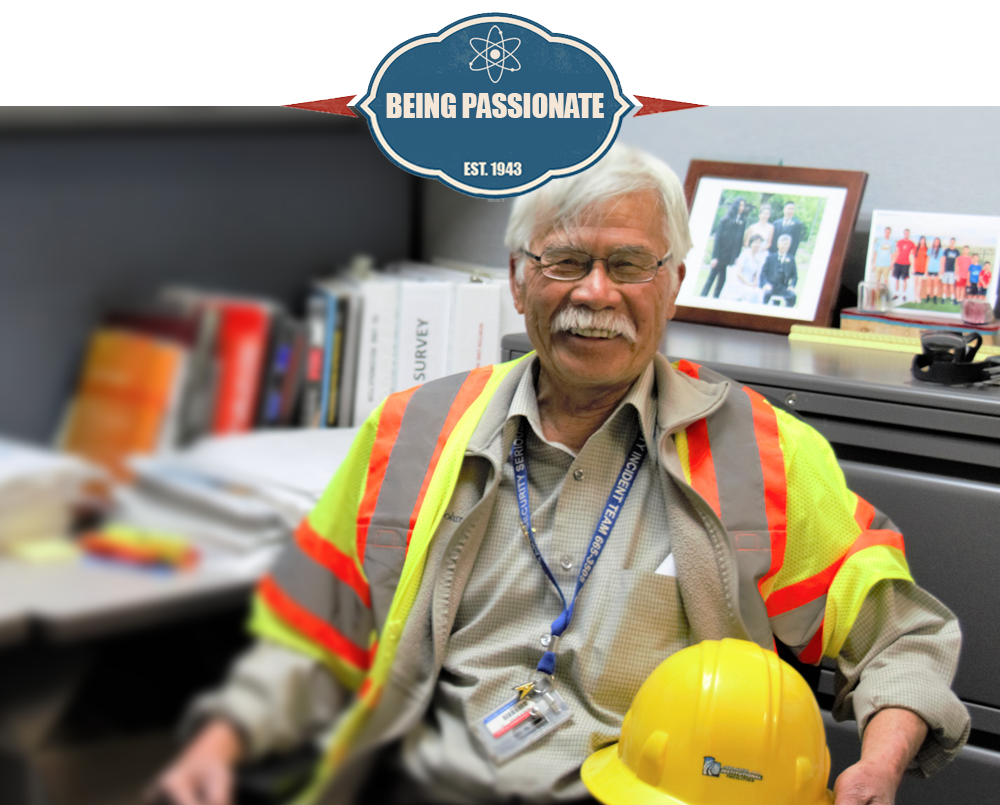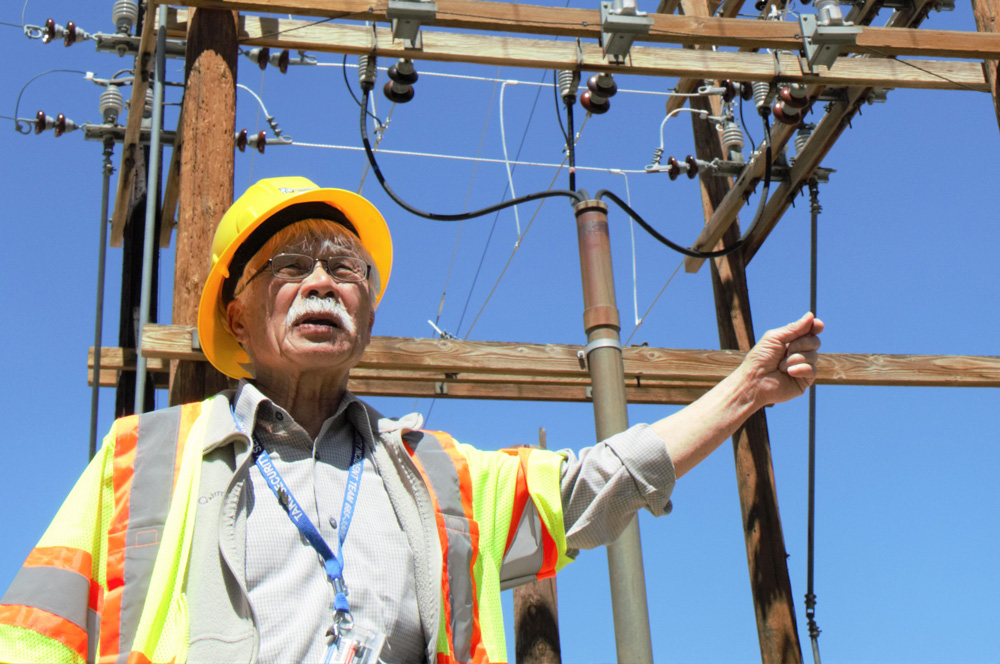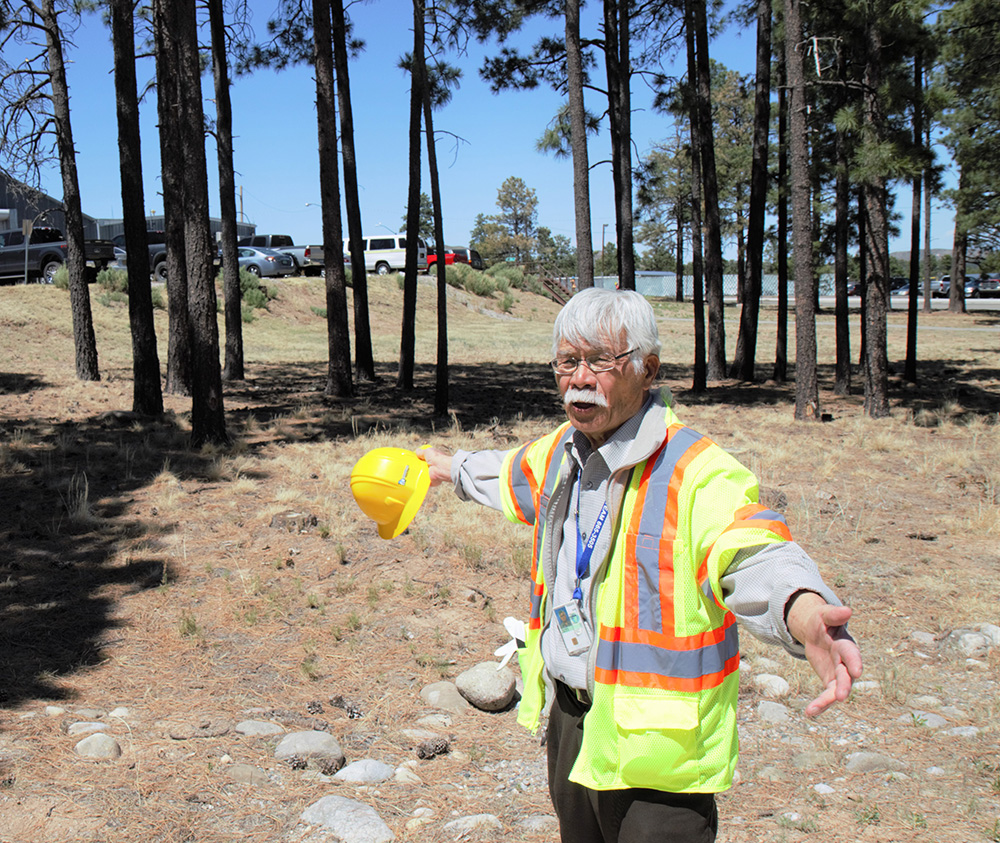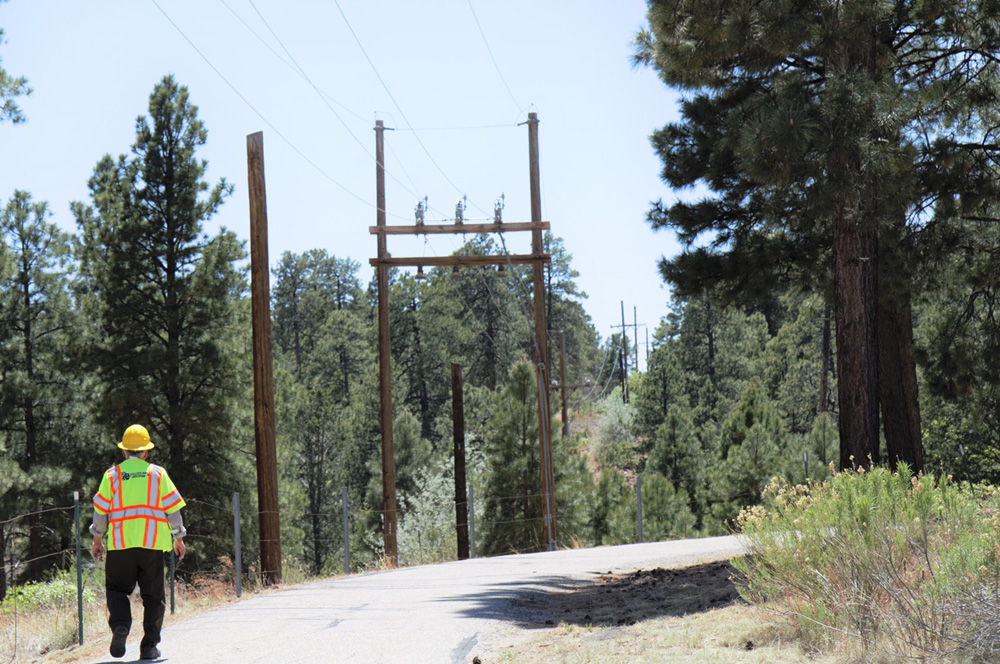Being Passionate: Emilio Racinez
Lab Character: Who We Are

Emilio Racinez
Emilio Racinez believes the atomic bomb saved his life. As a young boy living in the battle-scarred Philippines during World War II, he was one of thousands who felt great relief when Japan was defeated, due in part to the American bombings in Hiroshima and Nagasaki. A lifetime later, his passion is serving the laboratory whose wartime innovations brought peace to his homeland.
Keeping the Lab’s lights on
Emilio Racinez, of Engineering Services – Utilities & Infrastructure (ES-UI), has been at the Laboratory for more than 30 years. Emilio started his career in Los Alamos in 1985 when he was in his late 40s, so retirement came relatively quick for him.
“I tried it,” he says with a sly smile. “It didn’t work, so I came back. And I’m still here.”
Emilio spent his early years living an idyllic life in the Philippine Islands until Japan occupied the area in World War II, bringing death and destruction to his doorstep. But Emilio persevered, receiving a degree in electrical engineering after the war before emigrating to the United States to work as an engineer. It was a dream come true when he hired on at the Lab.
“The atomic bomb saved the Filipino people from the Japanese,” Emilio says. “It put an end to the war, and I always dreamed about coming to work here because of it.”

Emilio, 80, stands next to a power line near TA-3. After more than 30 years on the job, he remains passionate about bringing more electrical power to the Laboratory.
Lab Character
Watch for more profiles of Lab employees who exemplify the nine positive character traits that personify who we are, past and present:
- Innovative
- Agile
- Passionate
- Responsive
- Tenacious
- Trusted
- Principled
- Scientific
- Iconic
Discover more about your colleagues and gain insight into their journeys . .
Idyllic childhood turns to chaos during World War II
Emilio’s earliest childhood memories are of beautiful ocean views, observing mothers as they washed clothes by the river, playing in the river with other kids and climbing trees. Things changed when on Dec. 8, 1941 – the day after the attack on Pearl Harbor – the Japanese bombed the Philippines, destroying American aircraft and killing airmen at Clark Field Air Force Base.
“I remember running out into the street to watch the planes overhead,” recalls Emilio, who was just 5 years old at the time of the attacks. “The American bombers had airplane escorts, which got into dog fights with the Japanese ‘zeroes.’ They came so low we could see the faces in the cockpits. Bullet shells would fall like rain on the rooftops, and we could go and pick it all up later. We liked to play with the shells.”
Emilio chuckles when he remembers his interactions with the Japanese soldiers.
“They thought it was funny when we would bow to them, so we bowed and bowed until they got tired of it,” he says. “Then they would hit us with the butts of their rifles and off we’d go to play and maybe later steal back some food they had taken from us.”
Another memory is not funny at all.
“I remember when some of the men held captive by the Japanese would be outside the island’s schoolyard,” Emilio recalls. “They would be using shovels to dig these oblong holes. I asked someone why they were digging. I was told they were digging their own graves and that they were to be shot.”
“The hope for many Filipinos was that General Douglas MacArthur promised to return,” he adds. “That was what kept many of us going — the Americans, they will come back.”
In October 1944, Gen.MacArthur did return, coming ashore at Leyte in the southern Philippines.
But the war was far from over, and Emilio and his family found themselves under heavy attack by the Japanese, escaping into the jungle, where explosions set fire to trees and brush. The whole island was ablaze, and the only place that felt safe from the flames was the river.
“There was this bridge across the river,” Emilio remembers. “But those that tried to cross it were shot. My family and I decided to make our way through the shallow part of the river, where I fell down and almost got carried away by the current. I just reached out and a hand pulled me up.”
On August 1945, the attacks ceased.
“Just like that, everything stopped; no more fighting — no more bombing,” Emilio says. “We learned much later that the Americans had dropped an atomic bomb on Japan. We were so relieved because we felt safe at last.”
Passion for tinkering trades up to engineering
With the war over, kids returned to school and adults began rebuilding infrastructure. During his high school days, Emilio found he had a knack for understanding electricity.
“There were these little batteries, walkie-talkies, hand-cranked radios and other items the soldiers left behind,” he recollects. “We got them to work. Then we moved on to the bigger things — like the Jeeps. We got some of them to run, too.”
With his passion for tinkering, it’s no wonder he studied electrical engineering. While at the University of the Philippines, he met a few American professors who encouraged him to come to the United States.
Emilio took the advice, working for various organizations, including the Department of Energy’s Strategic Petroleum Reserve underground storage sites in Louisiana and Texas. Later, while working in Denver, Emilio noticed newspaper ads from Los Alamos National Laboratory, which had openings for engineers.
30 years of electrical infrastructure design for Los Alamos

Emilio explains transmission line management on the Laboratory's varied terrain.
Emilio has been an electrical engineer at the Lab since 1985. Over the past 30 years, he has designed and coordinated construction of much of the Laboratory’s electrical infrastructure, including the South Tech Area Substation, the West Area Substation, Southwest Transmission Line, Static Var Compensator and the upgrades to the East Tech Area Substation.
“My colleagues and I, we keep the lights on,” Emilio says with a gleam in his eye. “I get inspired listening to the Laboratory Director and scientists when they talk about missions of the Lab and the scientific projects they are working on because that means that these projects will need more power. These talks always give me the drive and motivation to design and construct new power lines.”
Even with so many projects under his belt, Emilio still finds he wants to do more.

“I take walks for my health,” he says. “During these walks, I look around and think about how to improve and expand the power distribution system all around me — I always want to come up with ways to bring more power, particularly when it comes to running the big machines here.”
Emilio points in a direction, and sure enough there are transmission lines and a substation in the distance.
“People tell me, ‘Emilio, you’re crazy to still be working here,’ but I want to continue helping this place because I am lucky to be here,” he says.
In 2018, Emilio reported to DOE Federal Project Director Bonita Rogozinsky, believing he was to give an update on a current substation project. Instead, Rogozinsky surprised him with a party to celebrate his 80th birthday.
Because of his experiences during World War II, Emilio’s connections to the American military and Los Alamos run deep. His older brother, only 15 years old, served with the U.S. Marines as a Philippine scout, tracking down Japanese soldiers in hiding. He also drove rolling kitchens to the front lines.
To this day, Emilio attends memorial events on September 11 and Veteran’s Day. Moreover, his son serves in the Marines and was working at the Pentagon during the 9-11 terrorist attack.
“We were saved by the bomb,” Emilio says. “Back then, if you ran the wrong way, you could get shot. There was disease. There was starvation. If the Japanese occupation had continued for a few more months, maybe I would not be here. For me, I say we were saved by the bomb — and now I am here, working where it all began.”





